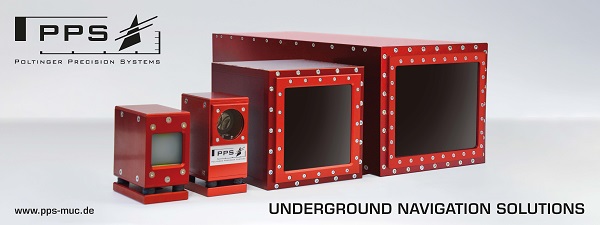-
Add to Calendar 22/03/2021 11:00:00 26/03/2021 16:00:00 TUNNEL & METRO FIRE PROTECTION WEBINAR SERIES - 22-26 MARCH 2021 Register at: www.tunnelfiredefence.com Fire Protection Systems In Tunnels: Issues And Directions Fire in road and rail tunnels spreads very rapidly due to radiation. Charged particles are reflected from the internal surfaces of the tunnel, making it act like a clay oven. Hot gasses accumulating in the tunnel can lead to a flashover. Improper use of ventilation in an emergency can lead to “ventilated oven conditions”, increasing the convection effect and allowing the fire to gain intensity and spread inside the tunnel. A fire in a tunnel should therefore be controlled in its early stages, in order to limit its spread. Not all tunnels are provided with service tunnels connected to the main tunnel, and sometimes the driving distance for emergency vehicles can be relatively long. The electrification system to trains inside the tunnel needs to be de-energized by the people with the proper jurisdiction, authority and knowledge before manual fire fighting can be organised. Interventions may also be delayed by the difficulty involved in identifying the fire area due to heavy toxic fumes, extremely high temperatures, obstructions, derailments or unknown hazardous materials. Considering the above, property damages resulting from a fire in a tunnel can be very significant, including both tunnel structure, vehicles and track. Tunnel owners and operators are confronted with the problem of rising costs for tunnel safety Protect The Tunnel Structure And Minimise Damages On The Tunnel Hampering Fire Spread To Adjacent Objects Facilitate The Work Of The Rescue Services Improvement of The Self Rescue Conditions for The People Inside The Tunnel Structural and organisational measures: escape tunnels, escape areas, smoke extraction, concepts for stopping, rescue concepts Accurate and timely fire location Automatic triggering of interactions to control traffic, to assess the risk at the site of fire, to control ventilation and alarm emergency services Automatic control of extinguishing systems to hold down the fire control temperature until the emergency services can be deployed Interactive webinar sessions offer a unique opportunity for a focused audience with shared investment interests to benchmark best practice and explore solutions to critical challenges. Hosted by industry experts each webinar focuses on a single issue. DD/MM/YYYY
TUNNEL & METRO FIRE PROTECTION WEBINAR SERIES - 22-26 MARCH 2021
- 4 attendees

Register at: http://www.tunnelfiredefence.com
Fire Protection Systems In Tunnels: Issues And Directions
Fire in road and rail tunnels spreads very rapidly due to radiation. Charged particles are reflected from the internal surfaces of the tunnel, making it act like a clay oven. Hot gasses accumulating in the tunnel can lead to a flashover. Improper use of ventilation in an emergency can lead to “ventilated oven conditions”, increasing the convection effect and allowing the fire to gain intensity and spread inside the tunnel. A fire in a tunnel should therefore be controlled in its early stages, in order to limit its spread.
Not all tunnels are provided with service tunnels connected to the main tunnel, and sometimes the driving distance for emergency vehicles can be relatively long. The electrification system to trains inside the tunnel needs to be de-energized by the people with the proper jurisdiction, authority and knowledge before manual fire fighting can be organised. Interventions may also be delayed by the difficulty involved in identifying the fire area due to heavy toxic fumes, extremely high temperatures, obstructions, derailments or unknown hazardous materials. Considering the above, property damages resulting from a fire in a tunnel can be very significant, including both tunnel structure, vehicles and track.
Tunnel owners and operators are confronted with the problem of rising costs for tunnel safety
- Protect The Tunnel Structure And Minimise Damages On The Tunnel
- Hampering Fire Spread To Adjacent Objects
- Facilitate The Work Of The Rescue Services
- Improvement of The Self Rescue Conditions for The People Inside The Tunnel
- Structural and organisational measures: escape tunnels, escape areas, smoke extraction, concepts for stopping, rescue concepts
- Accurate and timely fire location
- Automatic triggering of interactions to control traffic, to assess the risk at the site of fire, to control ventilation and alarm emergency services
- Automatic control of extinguishing systems to hold down the fire control temperature until the emergency services can be deployed
Interactive webinar sessions offer a unique opportunity for a focused audience with shared investment interests to benchmark best practice and explore solutions to critical challenges. Hosted by industry experts each webinar focuses on a single issue.
Register to event
Contact Details
cover tunnel photo by: Matt Brown from London, England / CC BY
Copyright 2019-2024 TunnelContact.com











